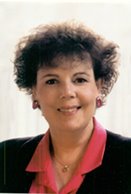Every year at this time, as winter grudgingly gives way to a blustery, wet Northwest spring, attention turns to the 31 Yoshino cherry trees lining the Quad at Seattle's University of Washington. These trees are a natural hybrid in Japan and are the most popular and widely planted cultivated flowering cherries in temperate climates. When they bloom they create a canopy of soft pink that attracts tourists, picnickers, loyal alumni, swoony sweethearts and just about every wedding photographer in the state.
Cherry blossom enthusiasts plan vacations to Seattle from across the country and abroad to be here when the blooms are at their fullest. But when exactly that takes place is, of course, subject to the whims of ever-changeable Northwest weather.
 The Quad’s Yoshino Cherry trees were purchased and planted at Washington Park Arboretum in or around 1939.They were brought to the UW campus proper in the early 1960s when State Route 520 was built.
The Quad’s Yoshino Cherry trees were purchased and planted at Washington Park Arboretum in or around 1939.They were brought to the UW campus proper in the early 1960s when State Route 520 was built.
Are they OK? Do they need replacing?
They’re healthy and growing, they still look fantastic and are blooming fantastically. Still, nothing lasts forever, and replacements will ultimately be needed. They’re healthy, but their life expectancy is 60 to 100 years and they’re getting to a very mature phase of their life. Based on the trunk sizes — documentation here is incomplete — that only two trees have been replaced, and neither of those in the last 10 years.
When is was determined the trees were in danger of decline and had them grafted for future replacement. Those replacement trees growing at a nursery in Mount Vernon, about an hour to the north. The UW Class of 1959 raised money and created an endowment to pay for tree replacements, and members of that class remain interested and involved in the process.
When their two- to three-week run has ended, the Yoshino cherry tree blossoms will drop in flurries and decorate the Quad grounds for days afterward — a gentle and fitting end to the annual display.
And then? Springtime — we hope.










No comments:
Post a Comment